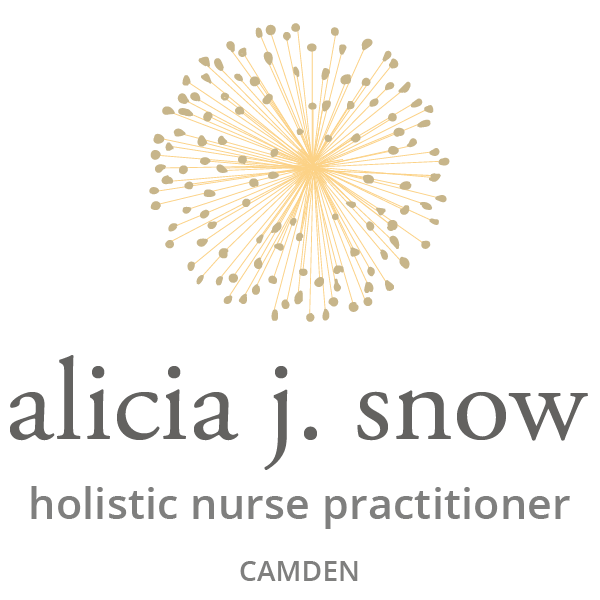Good Medicine Blog
Maintaining immunity with vitamin D.
As we continue to face a worldwide pandemic, the subject of immunity is of increased importance. In fact, a person’s immunity is at least as important as their potential exposure to coronavirus, and other viruses. We talk and talk about masking and social distancing as these have proven to lower rates of transmission, but of equal importance is the maintenance of proper immunity. For those who live in Maine, vitamin D deficiency is a very real risk factor, and is easily corrected.
As most people know, vitamin D comes largely from sunshine, so geographic location plays a large role in the ability to get vitamin D from sunshine. According to Harvard Health blog, there’s little to no chance of getting sufficient vitamin D from the sun if you live above the 37th latitude ( we live at 44 degrees). It’s possible to get vitamin D from your food, though it can be difficult to get your recommended levels. The dietary sources of vitamin D are relatively scarce, and are limited to fish oils within mackerel and sardines, cod liver oil, shiitake mushrooms and fortified milk products. Since large quantities of these foods are required to supply adequate vitamin D, particularly in northern latitudes, the use of supplements is paramount to the attainment of healthy vitamin D levels. It is worth noting that farm raised fish contains about twenty-five percent of the concentration of vitamin D that wild-caught fish contains, making the economic appeal of farm raised fish a potential contributor to vitamin D insufficiency.
Perhaps most importantly, vitamin D can also play a role in your body’s response to infectious diseases like the flu, common cold, tuberculosis and coronavirus. Vitamin D has been increasingly recognized for its effect upon multiple diseases, particularly cardiovascular diseases, seasonal depression, osteoporosis, immune dysfunction and autoimmune diseases such as irritable bowel syndrome, multiple sclerosis, rheumatoid arthritis and type 1 diabetes (Antico et al., 2012; Chakhtoura & Azar, 2013; Prietl et al., 2013; Shah et al., 2014). Most recently, researchers have found that adults with low D levels were more likely to experience more severe illness in the presence of coronavirus (J Steroid Biochem Mol Biol. 2020 Nov; 204: 105771).
In a recent peer-reviewed article published by the National Institute of Health, researchers concluded that “vitamin D3 supplementation during or just before COVID-19 was associated in frail elderly with less severe COVID-19 and better survival rate (J Steroid Biochem Mol Biol. 2020 Nov; 204: 105771).” This study, in which elderly patients with a positive diagnosis of coronavirus were given supplemental vitamin D and compared to similar patients who had not received the supplement, demonstrated significantly improved outcomes in patients who received vitamin D supplementation. The article summarizes this finding by stating, “ in particular, by activating or repressing several genes in the promoter region of which it binds to the vitamin D response element, vitamin D may theoretically prevent or improve COVID-19 adverse outcomes by regulating the renin-angiotensin system (RAS), the innate and adaptive cellular immunity, and the physical barriers (J Steroid Biochem Mol Biol. 2020 Nov; 204: 105771) .
This begs the question, “How do I know if I am deficient in vitamin D, and what do I do about it?” Firstly, remember that we live at about 44 degrees latitude, making us automatically much more likely to be low in vitamin D. Epidemiology shows that low levels of vitamin D are more common from October to March at northern latitudes above 20 degrees , (which corresponds precisely to the latitudes with the highest lethality rates of COVID-19 during the first months of winter 2020). Given the safety profile of vitamin D supplementation, it is reasonable to assume some measure of vitamin D deficiency and to supplement accordingly -- although for those with a primary care physician, it is ideal to have your vitamin D level checked. Levels below 50 umol are considered deficient. Supplementation is quite safe, with severely elevated levels of vitamin D causing little more than headaches and nausea. For those who are deficient, supplementation is safe at up to 10,000 iu ( international units) daily, although some evidence suggests that any more than 4,000 iu daily is unnecessary, and does the same as the higher amount. And, as always, consult with your physician. As a nurse practitioner, I recommend 5,000 iu daily regardless of deficiency, and 10,000 iu daily for those who prove to be deficient. Look for D3 as D2 requires sunshine for conversion to D3, the active form of the vitamin. As always, try to use a reputable source. Vitamin D3 is not an expensive vitamin and is available at most pharmacies and health food stores.
For more information on maintaining optimal immunity, check out the Good Medicine blog at aliciasnownp.com. Alicia Snow is a holistic nurse practitioner practicing out of Camden Whole Health in Camden, Maine. She is accepting new patients and can be reached at 207-322-8726.

